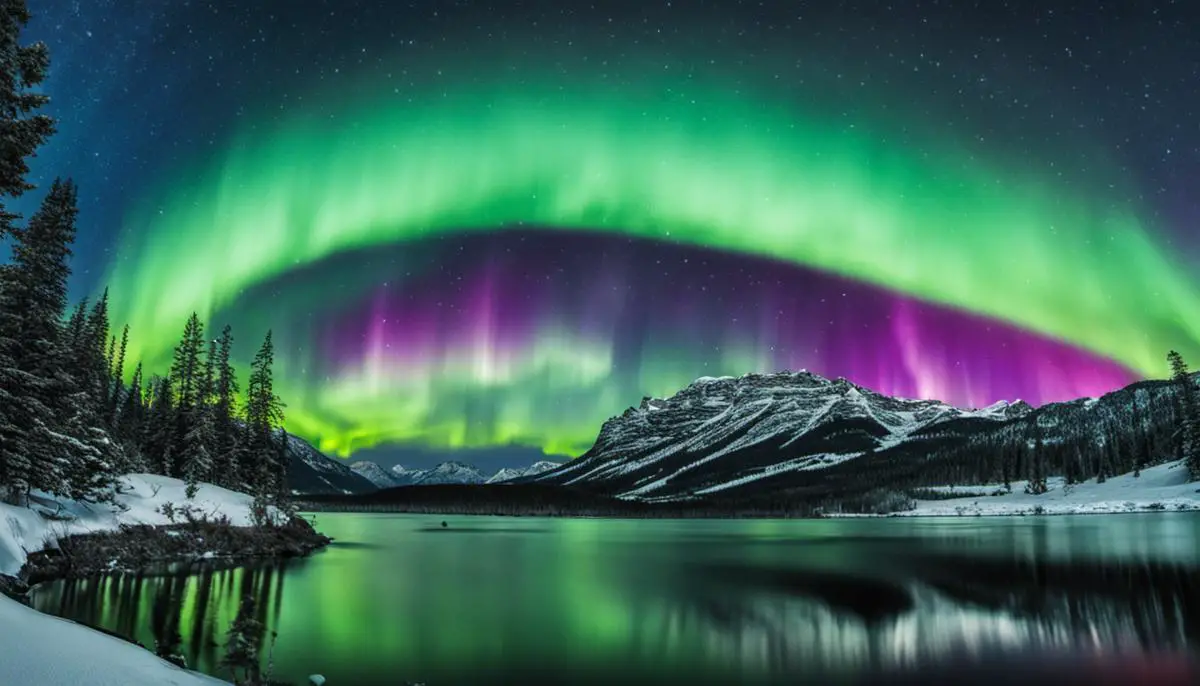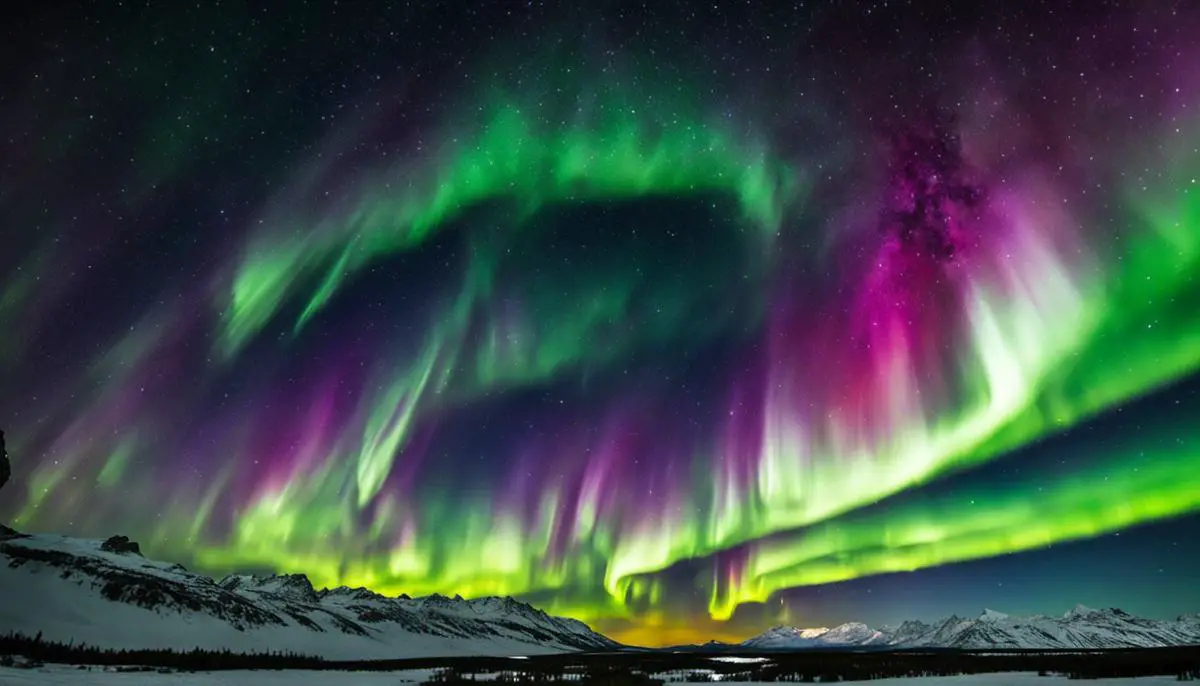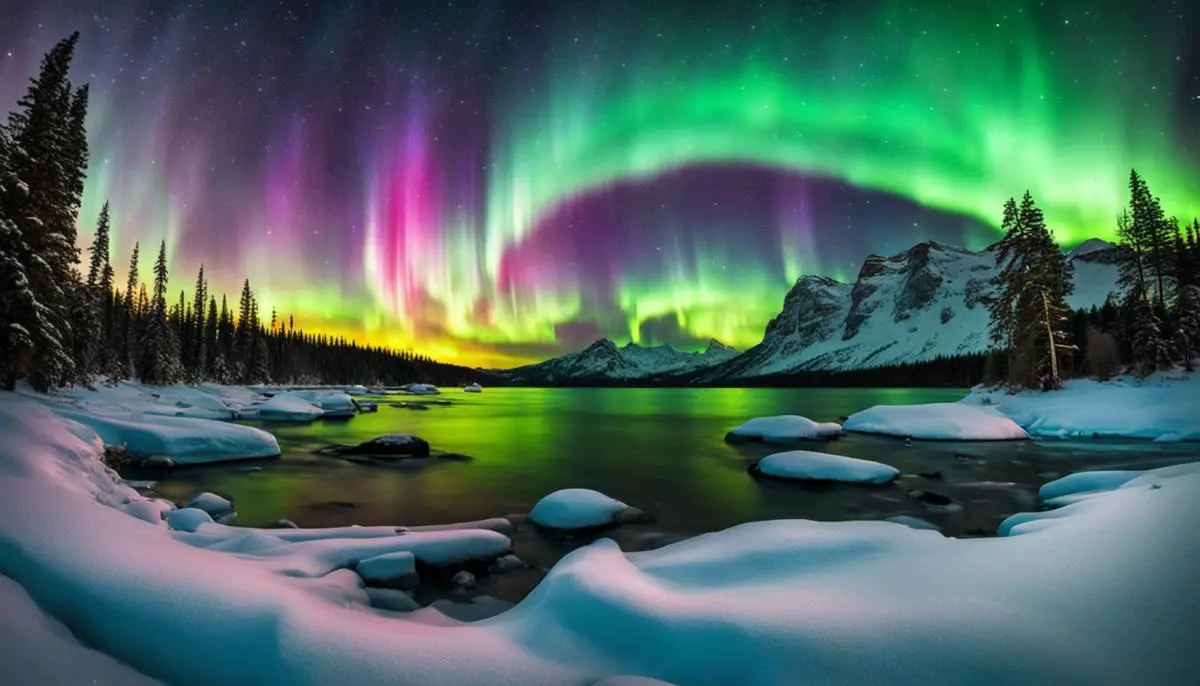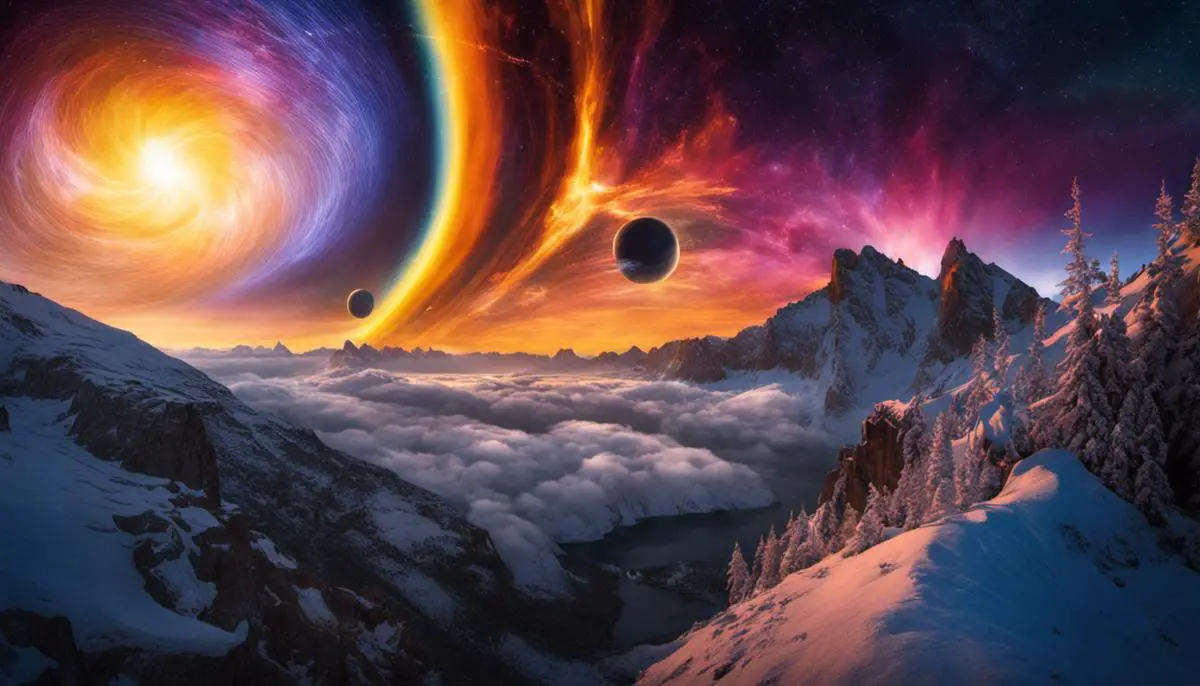Imagine standing under an expanse of starlit sky as shimmering ribbons of light suddenly burst forth, flickering and twirling in an electrifying dance. This is the sensational spectacle of auroras, a natural phenomenon that illuminates the polar night sky in stunning displays of color. The study of aurora offers a fascinating blend of scientific exploration, human perception, and cultural significance, each illuminating different aspects of this mesmerizing spectacle. In unraveling these enigmatic lights, we delve into a phenomenon that has been a beacon of curiosity and wonder throughout human history.
The Science Behind Aurora
Auroras: An Interplay of Solar Flares and Earth’s Magnetic Field
Auroras, those mesmerizing light shows of the northern and southern skies, are the dramatic result of interactions between the Sun’s solar flares and the Earth’s magnetic field. Solar flares are the Sun’s method of releasing energy. During these episodes, charged particles, such as electrons and protons, are ejected into space in an event called a solar wind.
The Earth’s magnetic field catches some of these charged particles. Due to the magnetic force field, many of the particles are directed towards the polar regions. As these particles travel towards the Earth’s poles, they collide with molecules in our planet’s atmosphere, which results in energy being transferred and released in the form of light—this is what we observe as an aurora. The aurora appearing in the Northern Hemisphere is known as the Aurora Borealis, or northern lights, and in the Southern Hemisphere as the Aurora Australis, or southern lights.
The Colorful Scene: The Role of Earth’s Atmosphere
The presence of a variety of colors in the aurora is directly related to the Earth’s atmosphere and the type of gas particles involved in these collisions. Different gases, at different altitudes, react differently when they interact with the solar charged particles, causing a range of colors. Each of these specific colors, most commonly green, pink, purple, red, blue, and yellow, is a direct result of this interaction happening at various altitudes and with different types of atmospheric gas particles.
The most common color, a brilliant yellow-green, is produced by oxygen molecules located about 60 miles above Earth. This interaction between the solar particles and the oxygen molecules results in a light that is a greenish-yellow hue. At much higher altitudes, (above 200 miles), oxygen will still produce a green color, but often it can also emit a rarer red light.
Nitrogen, another abundant element in the Earth’s atmosphere, has its own part to play as well. It can produce a blue or purplish-red light when interacting with the charged particles from the Sun. Lower levels of the atmosphere where nitrogen is found can give off the blue hues, while higher nitrogen levels can contribute to the purplish-red hues.
Hence, the study of auroras offers scientists valuable insights not just about our Earth’s magnetic field and atmospheric composition, but also about solar activities and how they affect our planet.
Auroras and Solar Activity
One noteworthy aspect is the direct correlation between the intensity of auroras and solar activity. The Sun has an approximately 11-year cycle, transitioning between periods of high activity (solar maximum) and low activity (solar minimum). During a solar maximum, there are more sunspots and solar flares, which lead to an increased number of charged particles, consequently intensifying the auroras. Conversely, during a solar minimum, auroras may be less vibrant and less frequent.
Despite advancements in scientific understanding, witnessing an aurora remains a mesmerizing experience. This vibrant light show, acting as a visible reminder of the often unseen link between our planet and the Sun, leaves observers in awe. The ongoing studies and interpretations of auroras serve to further our understanding of this Earth-Sun relationship, presenting a breathtaking intersection of astronomy, geophysics, and atmospheric science.

The Human Perception of Aurora
The Wonders of the Aurora: A Visual Feast
The beauty of auroras, commonly known as the Northern or Southern Lights depending on their geographical locations, has held humanity captivated for generations. This stunning natural phenomenon engages viewers with its magnificent array of colors, illuminating the night sky in a transformative spectacle. The aurora, in all its celestial glory, leaves those fortunate enough to experience it firsthand, in a state of profound wonder.
The Human Eye and the Aurora
The fundamental reason why we can see an aurora lies within the physiology of the human eye, specifically in its perception of light. The human eye picks up the light produced by the aurora when charged particles from the sun strike atoms in Earth’s atmosphere. This interaction excites these particles, causing them to light up and create the glowing spectacle we perceive as the aurora. The colors we observe are dependent on which type of gas the solar particles are interacting with, and at what altitude. Greenish-yellow, for instance, is the most common color, typically corresponding to oxygen molecules located about 60 miles above Earth.
Color Perceptions and Psychological Impact
Besides the physiological aspects, the aurora also has psychological implications as it stirs emotions of awe, wonder, and reverence among spectators. The different colors can evoke different emotional responses in viewers. For instance, green, the most common color seen in auroras, is commonly associated with tranquility, peace, and renewal, which might contribute to feelings of calm and peace when observing these displays. Crimson and purple, although rarer, might arouse feelings of intrigue and mystery due to their association with these emotional states in various cultures.
Aurora’s Shapes and Forms
The shapes and forms of the aurora are largely due to the Earth’s magnetic field. The aurora typically appears as curtains, arcs, or even shooting rays that light up the Earth’s magnetic field lines. The intensity and shape of auroras can change quickly and dramatically, morphing and flowing across the sky, sometimes filling it up completely. These dynamic patterns are due to changes in the solar wind. When the solar wind is stronger, more charged particles reach the Earth, resulting in more intense and extensive auroras.
Social and Cultural Implications of Auroras
Auroras, more commonly known as the Northern and Southern Lights, hold immense socio-cultural importance across the globe. Indigenous communities inhabiting the polar regions have particularly rich histories and legends linked to this fascinating spectacle. Even in this modern era, individuals from all corners of the earth make special journeys to bear witness to the auroras, underscoring the profound impact this astronomical phenomenon has on human engagement and experience.

Cultural Significance of Auroras
Auroras: Ancestors, Gods, and Game-Spirits
Throughout centuries, auroras have wielded considerable influence across diverse cultures. In many ancient societies, these mesmerizing celestial displays were seen as portents from the divine. The Vikings, for instance, perceived the appearance of an aurora as heralding forthcoming victory in battle.
Other indigenous cultures worldwide hold unique interpretations for these radiant displays in the sky. The Inuit, residents of the Arctic, conceived of auroras as the spirits of the departed engaged in a playful match across the celestial vault. Similarly, several Native American tribes perceived the illumination as the spirit-presence of their forebears.
Auroras in Mythology and Legends
Numerous myths and legends revolving around auroras have emerged from various societies. In Norse mythology, auroras were believed to be the dancing spirits of the Valiant fallen warriors. The Finnish, on the other hand, saw them as foxes stirring up atmospheric dust with their tails. Each interpretation is a unique reflection of the cultural contexts in which they originated.
On the other side of the world, the Maori people of New Zealand associated the lights with fires at the end of the world as a part of their tribal lore. Their tradition cites the auroras as a forewarning of looming disasters or significant conflicts, giving the lights a sense of unparalleled gravitas.
Auroras in Art, Literature, and Music
Not only have these stunning natural phenomena influenced history and mythology, but they’ve also had a significant impact on the arts. Many artists have been inspired by the unique beauty of auroras, incorporating them into their works.
Impressionist painter Frederic Edwin Church’s piece “Aurora Borealis” is an example of the Northern Lights’ influence on art. This large-scale landscape painting exudes a sense of ethereal wonder, capturing the mysterious allure of an aurora.
In literature, auroras have been depicted as harbingers of change or symbols of nature’s mysticism. The sight of the fantastical lights has also inspired numerous songs and musical compositions, spanning from classical symphonies to contemporary pop tracks.
In a contemporary context, the dazzling auora displays remain a profound source of inspiration. They continue to captivate the gaze of photographers, filmmakers, and artists alike, sparking a sense of wonder and awe in audiences around the world.

Indeed, the aurora is more than just a mesmerizing spectacle. It is a complex interaction of solar and earth sciences that paints our skies with captivating colors. It is an experience that engages our human senses, fostering awe and inspiration. And it is a cultural symbol, woven into the fabric of societies and influencing the arts. As we continue to gaze up at the night sky and marvel at the transformative beauty of the aurora, we find ourselves not only spectators of this incredible cosmic show, but part of a broader human narrative intricately intertwined with these stunning lights in the sky.
![]()
